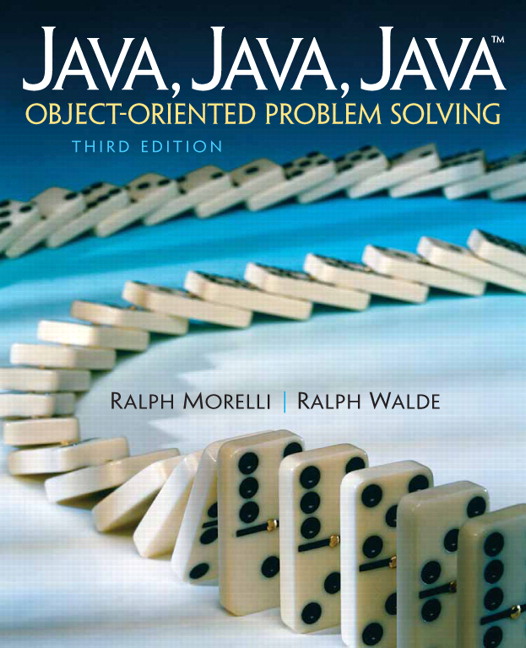Section 0.9 Chapter Summary
Subsection 0.9.1 Technical Terms
| action (behavior) | argument | attribute |
| class | class inheritance | class hierarchy |
| class method | class variable | compiler |
| computer program | constructor | high-level language |
| instance | instance method | instance variable |
| interpreter | method | message |
| object | object code | object oriented |
| result | source code | subclass |
| superclass | Unified Modeling Language (UML) | variable |
Subsection 0.9.2 Important Points
- A computer system generally consists of input/output devices, primary and secondary memory, and a central processing unit. A computer can only run programs in its own machine language, which is based on the binary code. Special programs known as compilers and interpreters translate source code programs written in a high-level language, such as Java, into machine language object code programs. Application software refers to programs designed to provide a particular task or service; systems software assists the user in using application software.
- The client/server model is a form of distributed computing in which part of the software for a task is stored on a server and part on client computers.
- HyperText Markup Language (HTML) is the language used to encode WWW documents.
- A Java program is a set of interacting objects. This is the basic metaphor of object-oriented programming.
- An object in a Java program encapsulates the program’s attributes (or variables) and actions (or methods). A variable is a named memory location where data of appropriate type can be stored. A method is a named section of code that can be called (or invoked) when needed.
- An object’s methods are used to pass messages to it.
- A class is an abstract template that defines the characteristics and behaviors of all objects of a certain type.
- An object is an instance of a class. An object has instance methods and instance variables. A class method (or class variable) is a method (or variable) that is associated with the class itself, not with its instances.
- A constructor is a special method that is used to construct objects.
- Java classes are organized into a class hierarchy, with the
Objectclass at the top of the hierarchy. For a given class, classes that occur below it in the hierarchy are called its subclasses, while classes that occur above it are called its superclasses. - Classes inherit attributes and methods from their superclasses. This is known as class inheritance.
-
The main principles of the object-oriented programming approach are as follows:
- Divide and Conquer: Successful problem solving involves breaking a complex problem into objects.
- Encapsulation and Modularity: Each object should be assigned a clear role.
- Public Interface: Each object should present a clear public interface that determines how other objects will use it.
- Information Hiding: Each object should shield its users from unnecessary details of how it performs its role.
- Generality: Objects should be designed to be as general as possible.
- Extensibility: Objects should be designed so that their functionality can be extended to carry out more specialized tasks.
- Abstraction is the ability to group a large quantity of information into a single chunk so it can be managed as a single entity.
You have attempted of activities on this page.

